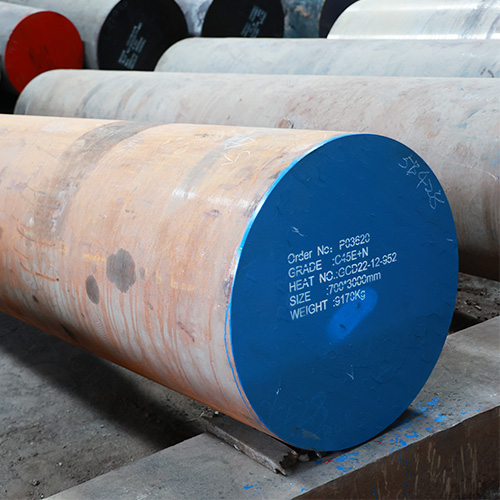Introduction

1045 alloy steel is a versatile medium-carbon steel that has found widespread application across various industries. Its balanced properties, including strength, toughness, and machinability, make it a popular choice for engineers and manufacturers. This comprehensive guide delves into the intricacies of 1045 alloy steel, exploring its composition, properties, heat treatment processes, applications, and factors influencing its performance. By the end of this article, you will have a thorough understanding of why 1045 steel is a reliable and cost-effective material for numerous engineering applications.
Composition and Properties
1045 alloy steel is primarily composed of iron, carbon, and manganese, with trace amounts of other elements. The carbon content, typically ranging from 0.43% to 0.50%, plays a pivotal role in determining the steel’s mechanical properties. Manganese, another crucial alloying element, enhances the steel’s hardenability, enabling it to undergo effective heat treatment processes.
The key properties of 1045 alloy steel that contribute to its versatility and widespread use include:
- Good Balance of Strength and Toughness: 1045 steel exhibits a desirable balance between strength and toughness, making it suitable for applications that require both high strength and resistance to impact loads. This property is particularly beneficial in automotive components, machine parts, and structural elements.
- Excellent Machinability: The moderate carbon content of 1045 steel renders it highly machinable, allowing for efficient and cost-effective machining operations. This property is crucial in the manufacturing of a wide range of components, from simple fasteners to complex machine parts.
- Good Weldability: 1045 steel can be readily welded using standard welding techniques, such as shielded metal arc welding (SMAW) and gas metal arc welding (GMAW). This property facilitates the fabrication of complex structures and assemblies.
- Response to Heat Treatment: 1045 steel is highly responsive to heat treatment processes, enabling the tailoring of its properties to specific application requirements. Through controlled heating and cooling cycles, the steel can be hardened, tempered, or normalized to achieve desired levels of strength, toughness, and ductility.
Heat Treatment
Heat treatment is a critical process for modifying the microstructure and mechanical properties of 1045 alloy steel. The most common heat treatment processes for 1045 steel include:
- Annealing: Annealing involves heating the steel to a specific temperature, holding it at that temperature for a sufficient period, and then slowly cooling it in a furnace. This process softens the steel, improves its machinability, and relieves internal stresses.
- Quenching and Tempering: Quenching involves rapidly cooling the heated steel, typically in water or oil, to form a hard, brittle microstructure. Tempering, which follows quenching, involves reheating the quenched steel to a lower temperature and then cooling it slowly. This process reduces the brittleness and increases the toughness of the steel.
- Normalizing: Normalizing involves heating the steel to a temperature above the upper critical temperature, holding it at that temperature for a sufficient period, and then cooling it in air. This process refines the grain structure, improves the mechanical properties, and homogenizes the composition of the steel.
Applications
The versatility of 1045 alloy steel, coupled with its favorable properties, makes it suitable for a wide range of applications across various industries. Some of the most common applications of 1045 steel include:
- Automotive Components: 1045 steel is extensively used in the automotive industry for manufacturing components such as gears, shafts, connecting rods, and suspension components.
- Machine Components: The excellent machinability and strength of 1045 steel make it ideal for producing machine components like spindles, bushings, and fasteners.
- Hand Tools: 1045 steel is a popular choice for manufacturing hand tools, including wrenches, pliers, and screwdrivers, due to its good balance of strength and toughness.
- Agricultural Equipment: 1045 steel is used in the construction of various agricultural equipment components, such as plowshares, harrow teeth, and cultivator tines.
- General Engineering Applications: The versatility of 1045 steel makes it suitable for a wide range of general engineering applications, including structural components, pressure vessels, and piping systems.
Comparison of 1045 Alloy Steel with Other Steels
| Property | 1045 Alloy Steel | Low-Carbon Steel | High-Carbon Steel |
|---|---|---|---|
| Carbon content | 0.43-0.50% | <0.30% | >0.60% |
| Strength | Medium | Low | High |
| Toughness | Medium | High | Low |
| Machinability | Excellent | Excellent | Good |
| Weldability | Good | Good | Fair |
| Heat treatability | Good | Poor | Excellent |
Factors Affecting the Performance of 1045 Alloy Steel

Several factors can influence the performance of 1045 alloy steel, including:
- Composition: Variations in the amounts of alloying elements can affect the steel’s properties.
- Heat treatment: The specific heat treatment process used will determine the final properties of the steel.
- Manufacturing process: Factors such as casting, forging, and machining can affect the microstructure and properties of the steel.
- Service conditions: Environmental factors such as temperature, corrosion, and wear can impact the performance of the steel.
Conclusion
1045 alloy steel is a versatile and widely used medium-carbon steel that offers a good balance of strength, toughness, and machinability. Its ability to be heat treated to achieve a wide range of properties makes it suitable for a variety of applications. By understanding the composition, properties, and applications of 1045 steel, engineers and manufacturers can make informed decisions about its use in their products.
FAQ
Q: What is the difference between 1045 and 1040 steel?
A: 1045 steel has a slightly higher carbon content than 1040 steel, resulting in slightly higher strength and hardness.
Q: Can 1045 steel be welded?
A: Yes, 1045 steel is readily weldable using standard welding techniques.
Q: What is the best heat treatment for 1045 steel?
A: The optimal heat treatment for 1045 steel depends on the desired properties. Quenching and tempering is commonly used to increase hardness and strength.
Q: What are some common applications of 1045 alloy steel?
A: 1045 alloy steel is used in a wide range of applications, including automotive components, machine components, hand tools, and agricultural equipment.
